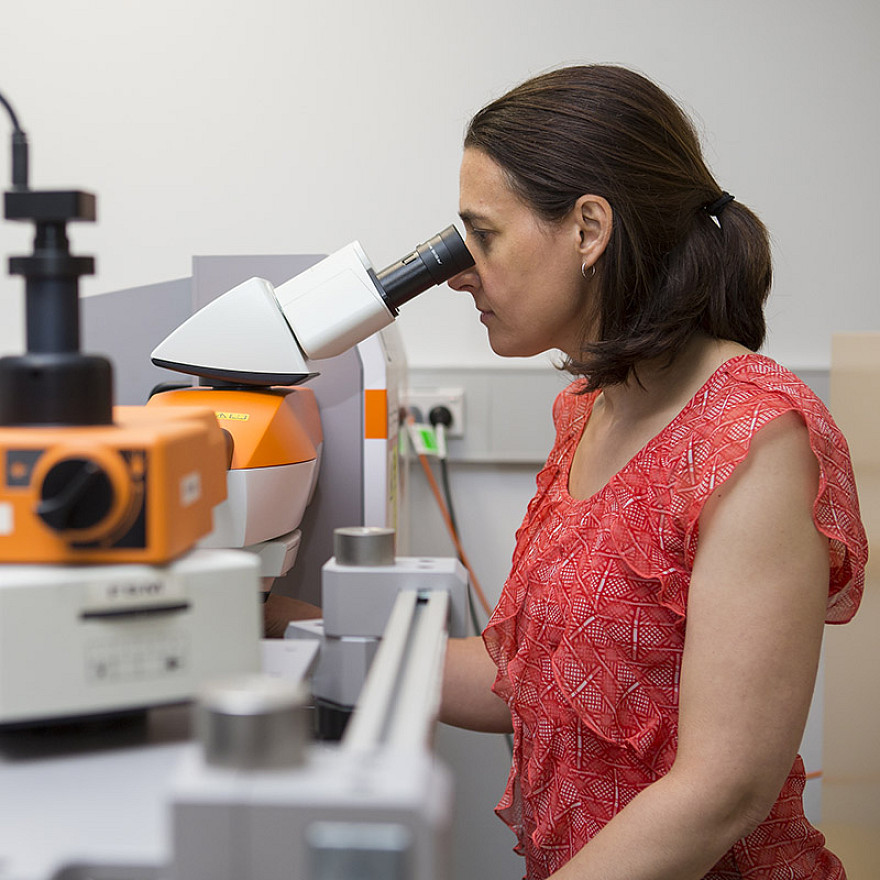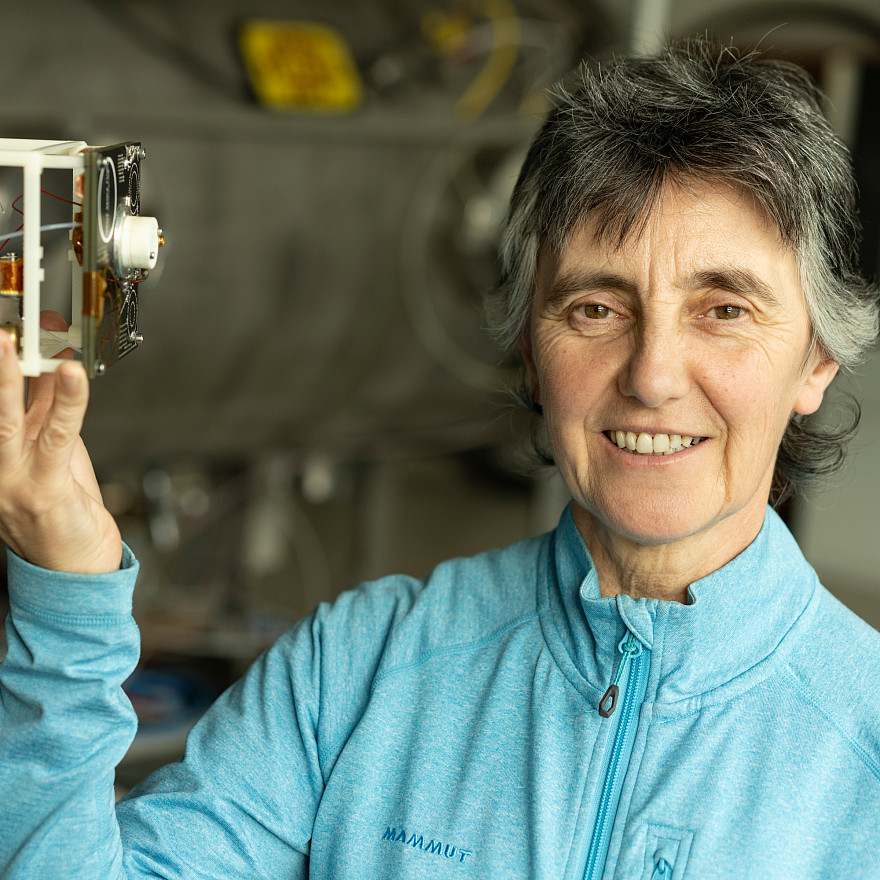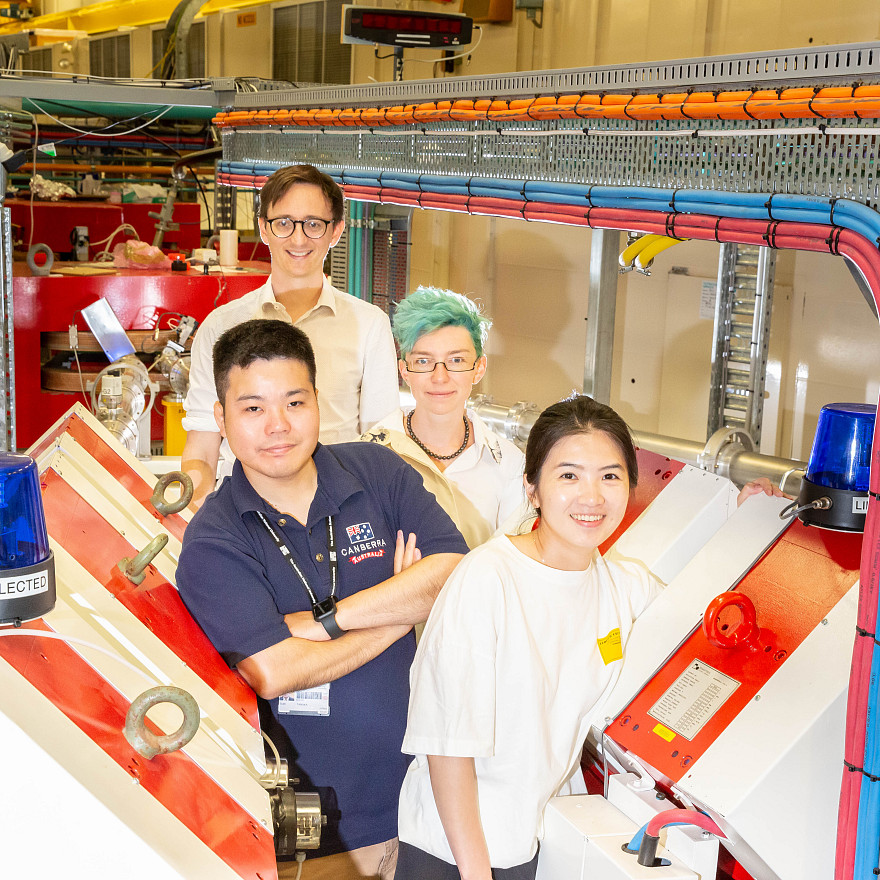The new building at ANU Physics is our most extensive upgrade in 70 years. The state-of-the-art building will house exquisitely stabilised quantum and laser labs, pristine clean rooms for experiments and fabrication and a world-class venue for talks and conferences.

Professor Jodie Bradby loves diamonds not for the sparkle, but for their structure. Instead of waiting millenia for diamonds to be formed deep in the Earth’s hot interior she’s found a way to make instant, room-temperature diamonds from graphite, using just extreme pressure, with a twist (literally).
Our quantum physicists love diamonds too, as long as they are flawed. Tiny defects in the regular pattern of atoms create quantum effects that can be used as an atomic microscope, sensor of magnetic and electric fields or temperature.
They also can be used in quantum computers - Quantum Brilliance is a spin off company from ANU Physics that is using diamonds for just that.

Professor Christine Charles is holding a cubesat featuring the Pocket Rocket plasma thruster developed here at ANU Physics.
Networks of these tiny satellites are already circling the globe making scientific measurements and sending their results back to the ground. At 10cm a side, and around one kilogram, they are cheap and easy to launch – but they need a light and efficient thruster system.
Pocket Rocket is just that - uses radiofrequency pulses of voltage to heat gas until it glows, instead of heavy fuel in a conventional rocket.
Oh, and we do actually think electric cars are cool, too!

Juliet Kirby is working on fusion energy, a potentially clean, carbon-free power source with virtually unlimited fuel.
It’s the same process that powers the sun – but to do it on earth the fuel needs to be ten times hotter than the core of the sun. The ITER reactor, being built in the south of France, will operate at temperatures between 150 and 300 million degrees Celsius, at which the fusion fuel (isotopes of hydrogen) is a charged glowing gas called plasma.
Our experiments here at ANU Physics test materials that will make the best wall for containing this artificial sun: this picture shows the Magpie plasma experiment in which the interaction of plasma with different materials can be studied (hot tip, tungsten’s looking good).

That big white tower is an icon of Nuclear Physics. The accelerator inside boosts atoms to speeds as high as 250 million km/h, so we can smash them into a target to see how nuclei interact.
Part of our research is fusion – merging nuclei together. This helps us to understand how the atoms that make up the Earth – and ourselves – were created by fusion in exploding stars, billions of years ago – before the formation of the Earth.
We’re also working on how to create new superheavy elements to add to the periodic table, along with measuring agricultural soil erosion rates, researching potential new cancer treatments, searching for dark matter and more.